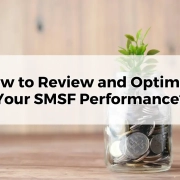How to choose a super fund?
Table of Contents
ToggleIn Australia, superannuation, commonly referred to as “super,” plays a crucial role in securing your financial future. It is a mandatory savings scheme that helps you accumulate funds for a comfortable retirement. Every employer in Australia is legally obligated to contribute a portion of your salary to your super fund. This contribution, known as the super guarantee, is currently set at 11.5% of your ordinary earnings, with the rate gradually increasing to 12% on 1 July 2025.
In this blog post , we will delve into the world of super funds, equipping you with the knowledge and tools to make a well-informed decision about your retirement savings. We will explore the different types of super funds, the key factors to consider when selecting one, and provide a step-by-step guide to navigate the selection process. Additionally, we will highlight common mistakes to avoid and offer valuable resources for further assistance.
Understanding Super Funds and Their Types
Super funds are the cornerstone of Australia’s retirement savings system. They act as investment vehicles, managing your super contributions and investing them in a variety of assets with the aim of growing your retirement nest egg. Just as there are different types of investment vehicles, there are also different types of super funds, each tailored to specific needs and preferences.
Industry Super Funds
Industry super funds are non-profit organizations run by members of a particular industry, such as healthcare or education. They are known for their low fees, competitive investment performance, and strong focus on member interests.
Retail Super Funds
Retail super funds are typically run by financial institutions, such as banks or insurance companies. They offer a wider range of investment options and may provide additional services, such as financial advice. However, their fees are often higher than those of industry super funds.
Public Sector Super Funds
Public sector super funds are designed for employees of government agencies and public institutions. They often have lower fees and may offer specialized investment options tailored to the needs of public sector workers.
Corporate Super Funds
Corporate super funds are typically established by employers for their own employees. They may offer specialised investment options aligned with the company’s industry or business goals.
Self-Managed Super Funds (SMSFs)
Self-managed super funds (SMSFs) give individuals more control over their investment decisions. However, they require a higher level of financial knowledge and understanding of investment risks.
Choosing the Right Type of Super Fund
The choice of super fund depends on your individual circumstances and preferences. Consider factors such as your age, risk tolerance, investment goals, and desired level of involvement in managing your investments.
Key Features of Super Funds
Super funds offer a range of features that can enhance your retirement savings journey. These may include:
- Investment options: Choose from a variety of investment options, such as growth, balanced, or conservative, to align with your risk tolerance and investment goals.
- Insurance coverage: Protect yourself against financial hardship in case of death, total and permanent disability (TPD), or income protection.
- Online access: Manage your super account online, track your investments, and access important information.
- Financial education tools: Enhance your financial literacy with educational resources and guidance.
Factors to Consider When Choosing a Super Fund
Navigating the world of super funds can be overwhelming, given the plethora of options and the intricate details associated with each fund. To make an informed decision that aligns with your financial goals and risk tolerance, it’s crucial to carefully consider the following factors:
Investment Performance
Evaluating a super fund’s historical performance is essential to gauge its ability to generate returns over time. Past performance, however, is not a guarantee of future results. It’s important to consider the fund’s investment strategy, risk profile, and fees when assessing performance.
Fees and Costs
Super funds charge various fees, including administration fees, investment fees, and insurance premiums. These fees can significantly impact your overall returns, so it’s crucial to compare fees across different funds.
Risk Tolerance
Risk tolerance refers to your willingness to accept potential losses in exchange for the possibility of higher returns. Younger individuals with a longer investment horizon may have a higher risk tolerance and may choose funds with a higher proportion of growth assets. Conversely, individuals closer to retirement may prefer a more conservative investment approach with lower risk and lower potential returns.
Investment Options
Super funds offer a variety of investment options, such as growth, balanced, and conservative options. Growth options typically invest heavily in assets like shares, offering the potential for higher returns but also carrying higher risk. Balanced options allocate funds across various asset classes, aiming for a balance between risk and return. Conservative options prioritise stability and capital preservation, investing primarily in low-risk assets like bonds.
Insurance Coverage
Super funds often provide insurance coverage against death, total and permanent disability (TPD), and income protection. Consider your individual needs and circumstances when assessing the adequacy of insurance coverage offered by different funds.
Member Services and Benefits
Super funds may offer additional services and benefits, such as financial education tools, retirement planning advice, and online access to account information. These services can enhance your understanding of your super and support you in making informed decisions.
Balancing Factors and Making a Choice
Choosing a super fund requires careful consideration of these factors, balancing your risk tolerance, investment goals, and desired level of involvement in managing your investments. It’s important to remember that there is no one-size-fits-all solution. The right super fund for you will depend on your unique circumstances and preferences.
Step-by-Step Guide to Choosing a Super Fund
Selecting the right super fund is a crucial step towards securing your financial future. To simplify the process and guide you towards an informed decision, follow these steps:
Step 1: Assess Your Goals and Needs
Before diving into comparing super funds, take some time to reflect on your retirement goals, risk tolerance, and investment preferences. Consider your desired retirement lifestyle, expected retirement age, and your comfort level with investment risks.
Retirement Goals
Envision your desired retirement lifestyle. Do you want to travel extensively, pursue hobbies, or simply enjoy financial freedom? Clearly defined goals will help you determine the amount of savings you need to achieve your aspirations.
Risk Tolerance
Assess your willingness to accept potential losses in exchange for the possibility of higher returns. Are you comfortable with fluctuations in your super balance, or do you prefer a more stable investment approach?
Investment Preferences
Determine your preferred investment style. Are you more inclined towards growth-oriented investments with higher potential returns but also higher risk, or do you prefer a more conservative approach with lower risk and lower potential returns?
Step 2: Compare Super Funds
Once you have a clear understanding of your goals and preferences, start comparing super funds. Utilise online tools and resources provided by the Australian Securities and Investments Commission (ASIC) and the Australian Taxation Office (ATO) to compare fees, investment performance, and features of different super funds.
Online Comparison Tools
Factors when comparing funds
- Fees: Compare administration fees, investment fees, and insurance premiums to assess the overall cost of managing your super.
- Investment Performance: Evaluate the fund’s historical performance over the long term, considering its risk profile and investment strategy.
- Investment Options: Assess the range of investment options offered by the fund, including growth, balanced, and conservative options.
- Insurance Coverage: Review the adequacy of insurance coverage provided by the fund, including death, TPD, and income protection insurance.
- Member Services and Benefits: Consider the additional services and benefits offered by the fund, such as financial education tools, retirement planning advice, and online account access.
Step 3: Seek Professional Advice
Consulting a qualified financial advisor can provide valuable guidance tailored to your specific circumstances. Financial advisors can help you assess your risk profile, evaluate your investment goals, and recommend a super fund that aligns with your needs.
Benefits of Professional Advice:
- Personalised recommendations based on your individual circumstances
- Comprehensive assessment of your risk tolerance and investment goals
- Expert guidance on navigating complex super fund options
- Tailored strategies to maximise your retirement savings
Common Mistakes to Avoid When Choosing a Super Fund
Navigating the world of super funds can be a daunting task, and making an informed decision can be challenging. To avoid common mistakes that could hinder your retirement goals, consider the following:
Basing the Decision Solely on Past Performance
While historical performance can provide insights into a fund’s investment approach, it’s not a guarantee of future results. Factors such as market conditions, investment strategies, and management changes can significantly impact a fund’s performance over time. Relying solely on past performance can lead to unrealistic expectations and potential disappointment.
Choosing a Fund Based on Marketing or Recommendations
Marketing campaigns and word-of-mouth recommendations can influence your decision, but it’s crucial to conduct independent research and compare super funds based on their own merits. Marketing materials often highlight positive aspects, while recommendations may be based on personal experiences that may not align with your specific circumstances.
Neglecting Insurance Coverage
Insurance coverage is essential to protect your financial well-being in case of unforeseen events such as death, total and permanent disability (TPD), or income protection. Carefully assess the insurance coverage offered by different super funds and ensure it meets your needs and risk tolerance.
Failing to Review and Update Super Fund Selection
As your circumstances and financial goals evolve over time, it’s important to regularly review your super fund selection. Your risk tolerance may change, your investment goals may shift, and new super fund options may emerge. Regular reviews ensure that your super fund remains aligned with your current needs and aspirations.
Overlooking Fees and Costs
Super fund fees can significantly impact your overall returns. Carefully compare administration fees, investment fees, and insurance premiums across different funds. These fees can vary considerably, and even small differences can compound over time and affect your retirement savings.
Ignoring Risk Tolerance
Investing in a super fund that doesn’t align with your risk tolerance can lead to unnecessary stress and anxiety. If you’re risk-averse, choosing a fund with a high proportion of growth assets could expose you to excessive volatility and potential losses. Conversely, if you’re comfortable with risk, a conservative fund may not provide the growth potential you seek.
Underestimating the Importance of Member Services
Member services can play a crucial role in enhancing your super fund experience. Evaluate the quality of member services offered by different funds, including online access to account information, financial education tools, and retirement planning advice. These services can support you in making informed decisions and maximising your retirement savings.
Choosing a super fund is a crucial step towards securing your financial future. By following the comprehensive guide outlined in this article, you are well-equipped to make an informed decision that aligns with your retirement goals, risk tolerance, and investment preferences. Remember, your super fund is a long-term investment, and the choices you make today will have a significant impact on your financial well-being in retirement.









